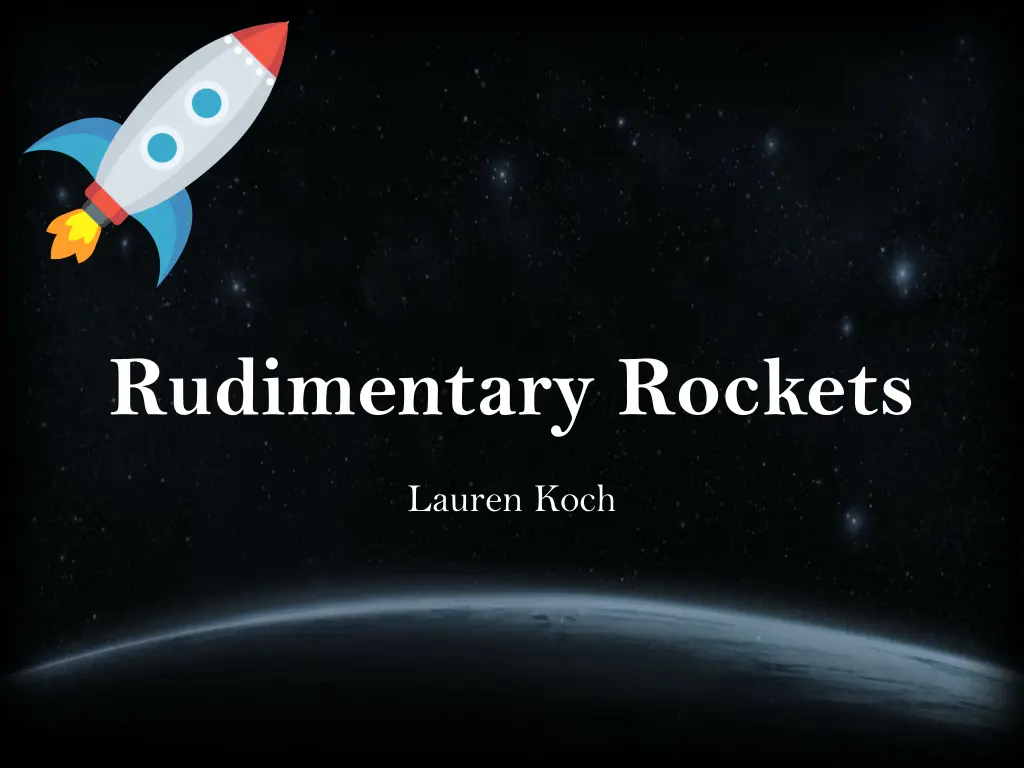
Flight Path Calculation for Model Rockets
"Learn how to calculate the flight path of a simple model rocket launched from a planet using variations of the Runge-Kutta method. Explore rocket and planet parameters, stages of flight, and equations involved in the process."
Download Presentation

Please find below an Image/Link to download the presentation.
The content on the website is provided AS IS for your information and personal use only. It may not be sold, licensed, or shared on other websites without obtaining consent from the author. If you encounter any issues during the download, it is possible that the publisher has removed the file from their server.
You are allowed to download the files provided on this website for personal or commercial use, subject to the condition that they are used lawfully. All files are the property of their respective owners.
The content on the website is provided AS IS for your information and personal use only. It may not be sold, licensed, or shared on other websites without obtaining consent from the author.
E N D
Presentation Transcript
Rudimentary Rockets Lauren Koch
Calculates the flight path of a simple model rocket launched from a planet Rocket parameters: rocket mass, fuel mass, burn rate, velocity of fuel ejection, drag coefficient, reference area Planet parameters: mass, radius, molar mass of atmosphere, average temperature, surface pressure Variations on the Runge-Kutta method are applied for each stage
Stage 1 Proceeds until fuel is exhausted dvdt = (Fth Fg Fd)/M(t) Compared against the Tsiolkovsky rocket equation Stage 2 Proceeds until maximum vertical height is achieved dvdt = (-Fg Fd)/M Stage 3 Proceeds until the rocket returns to the ground dvdt = (-Fg + Fd)/M
Rocket parameters 10,000 kg rocket 10,000 kg fuel 100 kg/s burn rate 7000 m/s fuel ejection velocity 0.5 drag coefficient 10 m2 reference area Planet parameters (Earth) 0.0286 molar mass of atmospheric gas 282.32 K average temperature 101,325 Pascal surface pressure






















